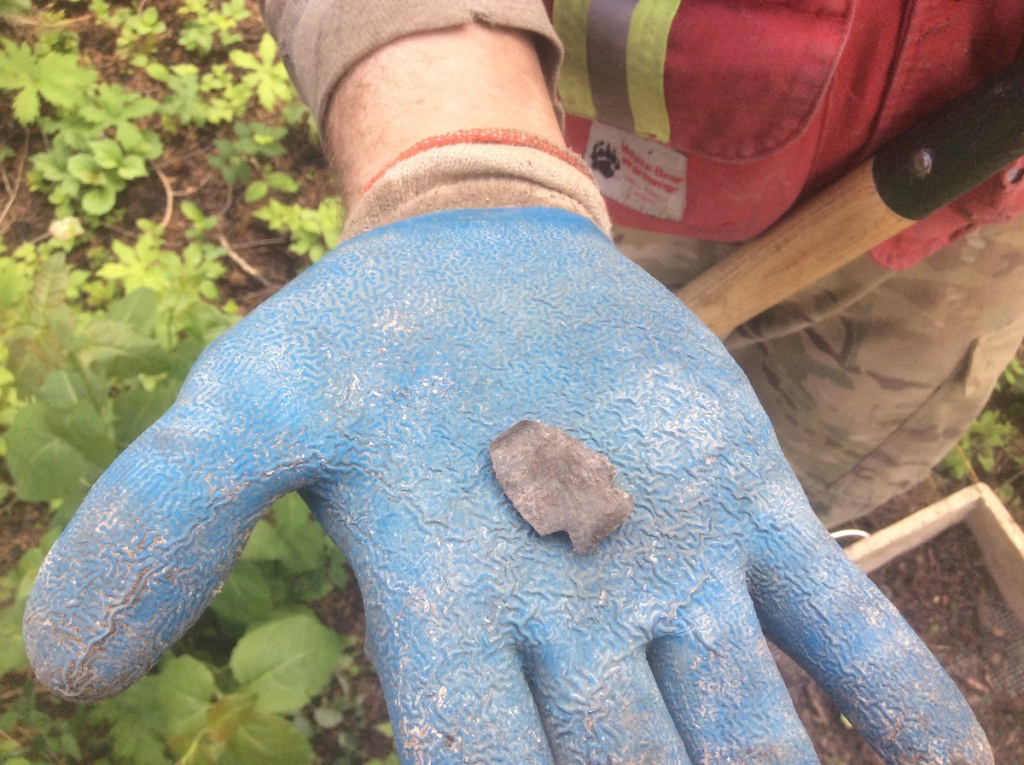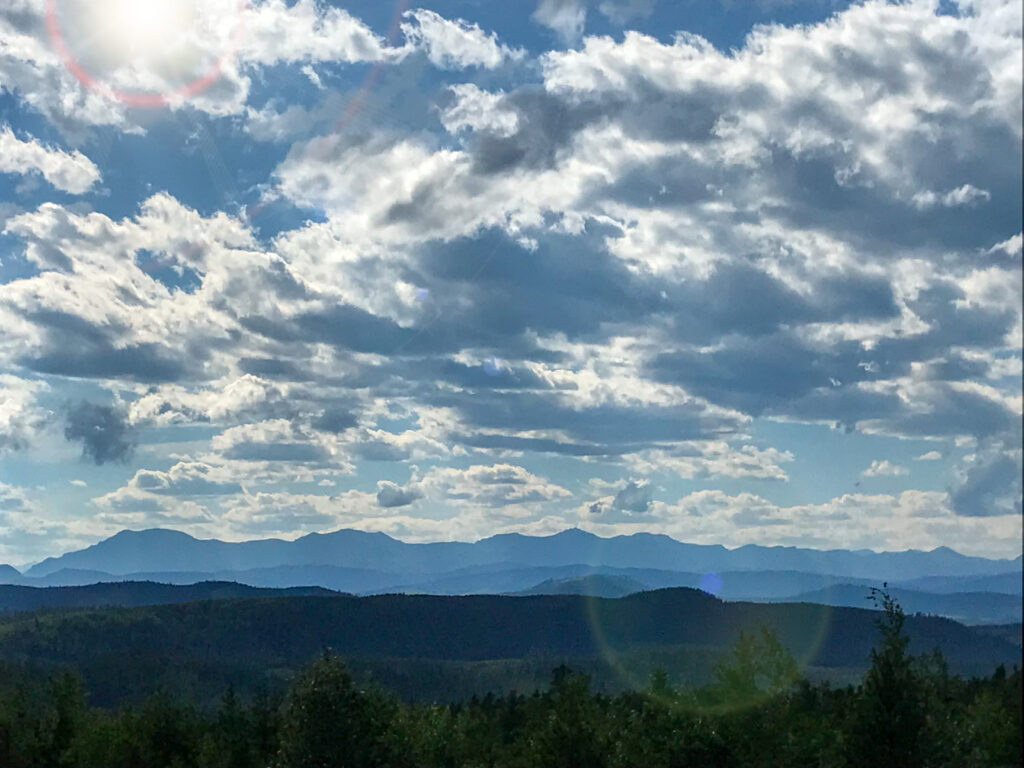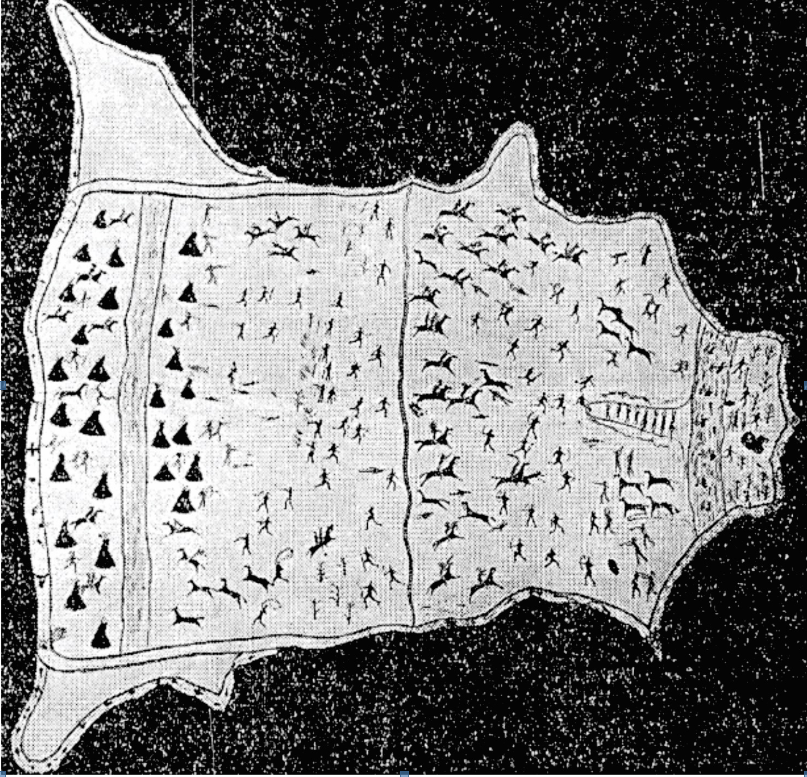Post Category : Archaeonerdism Local Archaeology
Wildfire and Archaeology: The good, the bad, and the opportunity
In recent years, wildfires in Canada and the United States have brought devastation to many communities. In the last 10 years, wildfires have burned nearly two million hectares of land in Canada alone. Human intervention, aimed at stemming the destruction wrought by wildfires during the last century, has actually increased the threat of large fires by fuel loading forests throughout North America. In the past, unchecked wildfires would naturally remove the built up fuel loads, and indigenous peoples also used fire as means to rejuvenate old growth areas so that food producing plants and animals would flourish. Increasing global temperatures and fire suppression activities have created an environment that promotes larger, more destructive and more intense wildfires.
I decided to write this blog post because I am keenly interested in the interaction between wildfires and archaeology. As a permit holding CRM archaeologist in Alberta, I am obviously curious about the effects wildfires can have on historic resources, and what they mean for my industry as a whole. But before becoming an archaeologist, I was a Type I Helitack Wildfire Fighter for 6 years. I have seen the awe-inspiring ferocity of wildfires first hand, and have a fairly good understanding of the nature of wildfires, their effects on the environment, and the destruction they can reap when they impact inhabited areas.
Let’s start with the BAD. It is no surprise that wildfires can negatively affect archaeological sites in a variety of ways. For example, the largest wildfire in New Mexico’s history, the Los Conchas Fire, impacted over 1000 archaeological sites. The associated loss of vegetation, and the flash flooding that resulted, further devastated many archaeological sites. Any prehistoric or historic site that contains above ground structures will be the most affected by wildfires. Historic buildings made of wood will likely be completely consumed, but stone structures can also experience a massive amount of damage. As stone is heated it can crack, and repeated heating and cooling events can cause stone to disintegrate entirely. If a stone is heated and then rapidly cooled, catastrophic fractures can occur. Water can also enter the cracks and speed up the degradation process, and this problem is exasperated by sub-zero temperatures. Freeze-thaw cycles are why there are so many potholes in Edmonton and why we only have two seasons – winter and construction. This process is especially damaging to archaeological sites with rock art, as fire, in combination with freeze-thaw, can cause large portions of the rock surface to spall and break off (Figure 2). The smoke and heat associated with forest fires can also stain rock surfaces and obscure the pictographs. This can irreparably damage these stone canvases that have lasted for thousands of years.

Individual artifacts at archaeological sites can also be damaged by wildfires. Surface artifacts such as stone flakes, pottery sherds or animal remains can all be severely damaged by fire, although it is important to note that this does not generally lead to a total loss of information. The stone artifacts may be potlidded and ceramics (Figure 3) may be stained, but archaeologist can still gain valuable information from their study. Subsurface artifacts (buried more than 15cm deep) are more insulated from the damaging effects of heat, but can still be affected , especially if the fire burns deep into the organic soil layer, through roots or if the artifacts are near heavy fuels like old tree stumps. A scraper I found last year while conducting an HRIA for Sundre Forest Products exhibited some potlidding that may have been caused by forest fire (Figure 4).


The vertical context of artifacts can be lost at archaeological sites that experience deep burning, or experience repeated burning. Archaeologists must be aware that sites with multiple occupations, spanning several thousand years, may appear as a single occupation if they experience a deep burn. A deep burn can remove the organic sediment and move all of the artifacts down to the surface of the mineral soil. About 15 years ago my crew fought a fire that started one summer and burned through the entire winter. The next summer we were surprised to find that the fire burned more than 2 metres into the ground! A site impacted by that burn would have lost all of its vertical context and the artifacts would have been affected to a great depth. Needless to say, fighting that ground fire was extremely difficult and required a lot of heavy machinery.
Although wildfires can be directly damaging to archaeological sites, the heavy equipment used in suppression activities may be the biggest source of impacts. In archaeologically sensitive areas like southern California, archaeologists trained to fight forest fires accompany fire crews and monitor the use of heavy equipment in an attempt to lessen the impact of suppression activities to archaeological sites.
In areas with valuable timber, salvaging partially burnt timber can also cause irreversible damage to archaeological sites. In Alberta, logging companies still need to complete a historic resources impact assessment (HRIA) when salvaging burnt forests. I have personally been involved in fire salvage HRIA’s that were conducted pre and post-impact. While conducting a pre-impact HRIA near Anzac after the devastating Ft. McMurray wildfire, I found a Besant point (Figure 5), and last year we found 3 new sites while conducting a post-impact HRIA in a burn near Rocky Mountain House.

This brings us to the GOOD. I know what you’re thinking: how could any good come from devastating wildfires! But aside from the rejuvenating effect that wildfires have on the ecosystem, they also make it substantially easier for professionals to locate new archaeological sites, increasing and expanding our knowledge of the archaeology of the area. The fire that tore through Waterton National Park last year burned close to 50% of the park’s area,. While this area was known to be archaeologically sensitive, the removal of the vegetation allowed researchers to study the extent of the past habitation by Blackfoot peoples to a degree that was previously impossible. Archaeologist were able to re-visit many on the 250+ sites that were located within the burn area, most of which had not been studied since the 1960’s and 70’s. It also allowed archaeologist to easily find many new sites without conducting labour intensive (and unreliable) shovel tests. Similarly, the Elephant Hill fire near Kamloops, B.C., opened up the forest, which aided archaeologists in identifying over 100 new sites in a relatively unexplored area. Both these fires provided archaeologists with valuable insights into the past and we all gained a wealth of information to help us understand how past peoples utilized and interacted with their environment.
Herein lies the OPPORTUNITY. It is important that we recognize that although wildfires are destructive, the removal of surface vegetation gives archaeologists and researchers unique opportunities to quickly gather a lot of information. This is especially important in archaeologically sensitive areas, as well as areas that are difficult to access, or where there is not the usual motivating factor for identifying archaeological sites, namely industry. In the future, we should take the opportunity to assess any fires that naturally occur within National Parks, such as Jasper or Banff, for historical resources. Prescribed burns that occur within the parks to reduce fuel loads, or to rejuvenate forests ravaged by the pine beetle, present a special and rare chance to increase our knowledge of how these areas were used in the past.
It is also becoming more apparent that there needs to be an increased effort by government agencies to minimize the impact that fire suppression activities can have on historical resources. As someone who has actively participated in fighting forest fires, I realize that decisions concerning the suppression of a fire traveling 10+ km/hr must be made fast, and there may not be time to consider the impact to historical resources. However, once the fire has been controlled, not assessing the potential damage to sites caused by suppression activities is somewhat irresponsible and a missed opportunity. Furthermore the reclamation of heavy impacts, such as dozer guards, further damages sites, and may damage sites that were not disturbed by the fire. The monitoring of these activities by archaeologists could increase the number of sites found, and thus increase our future understanding of peoples in the past, and protect our heritage from further disturbance.
References:
*Buenger, B.A. 2003. The impact of wildland and prescribed fire on archaeological resources. Lawrence, KS: University of Kansas. 345 p. Dissertation.
**Johnson, C. 2004a. Archaeological sites and fire-induced changes. In: Brunswig, R.H.; Butler, W.B., eds. Ancient and historic lifeways in North America’s Rocky Mountains: Proceedings of the Sixth biennial Rocky Mountain Anthropological Conference; 2003 September 18-20; Estes Park, CO. 16p.
Forest Fire image courtesy of Skeeze from Pixabay.
For more information see: https://www.fs.fed.us/rm/pubs/rmrs_gtr042_3.pdf



